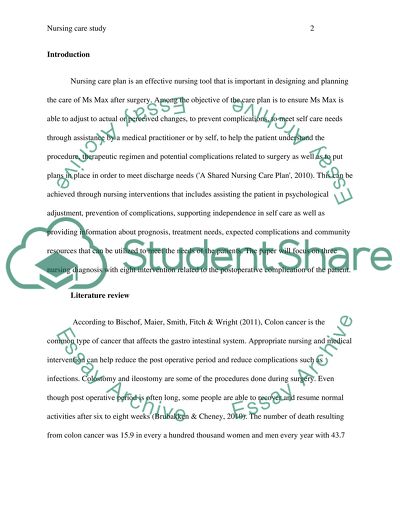Cite this document
(“Nursing care plan for a post-operation patient (CA colon) who was Case Study”, n.d.)
Nursing care plan for a post-operation patient (CA colon) who was Case Study. Retrieved from https://studentshare.org/nursing/1689859-nursing-care-plan-for-a-post-operation-patient-ca-colon-who-was-prolonged-icu-stay-due-to-prolonged-ventilator-support
Nursing care plan for a post-operation patient (CA colon) who was Case Study. Retrieved from https://studentshare.org/nursing/1689859-nursing-care-plan-for-a-post-operation-patient-ca-colon-who-was-prolonged-icu-stay-due-to-prolonged-ventilator-support
(Nursing Care Plan for a Post-Operation Patient (CA Colon) Who Was Case Study)
Nursing Care Plan for a Post-Operation Patient (CA Colon) Who Was Case Study. https://studentshare.org/nursing/1689859-nursing-care-plan-for-a-post-operation-patient-ca-colon-who-was-prolonged-icu-stay-due-to-prolonged-ventilator-support.
Nursing Care Plan for a Post-Operation Patient (CA Colon) Who Was Case Study. https://studentshare.org/nursing/1689859-nursing-care-plan-for-a-post-operation-patient-ca-colon-who-was-prolonged-icu-stay-due-to-prolonged-ventilator-support.
“Nursing Care Plan for a Post-Operation Patient (CA Colon) Who Was Case Study”, n.d. https://studentshare.org/nursing/1689859-nursing-care-plan-for-a-post-operation-patient-ca-colon-who-was-prolonged-icu-stay-due-to-prolonged-ventilator-support.


